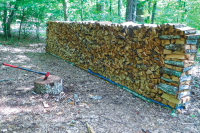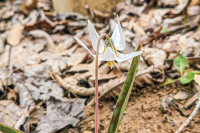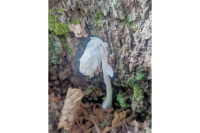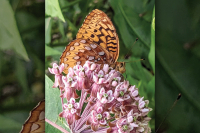Notes from a plant nerd: Magnolia Sweet as Sugar
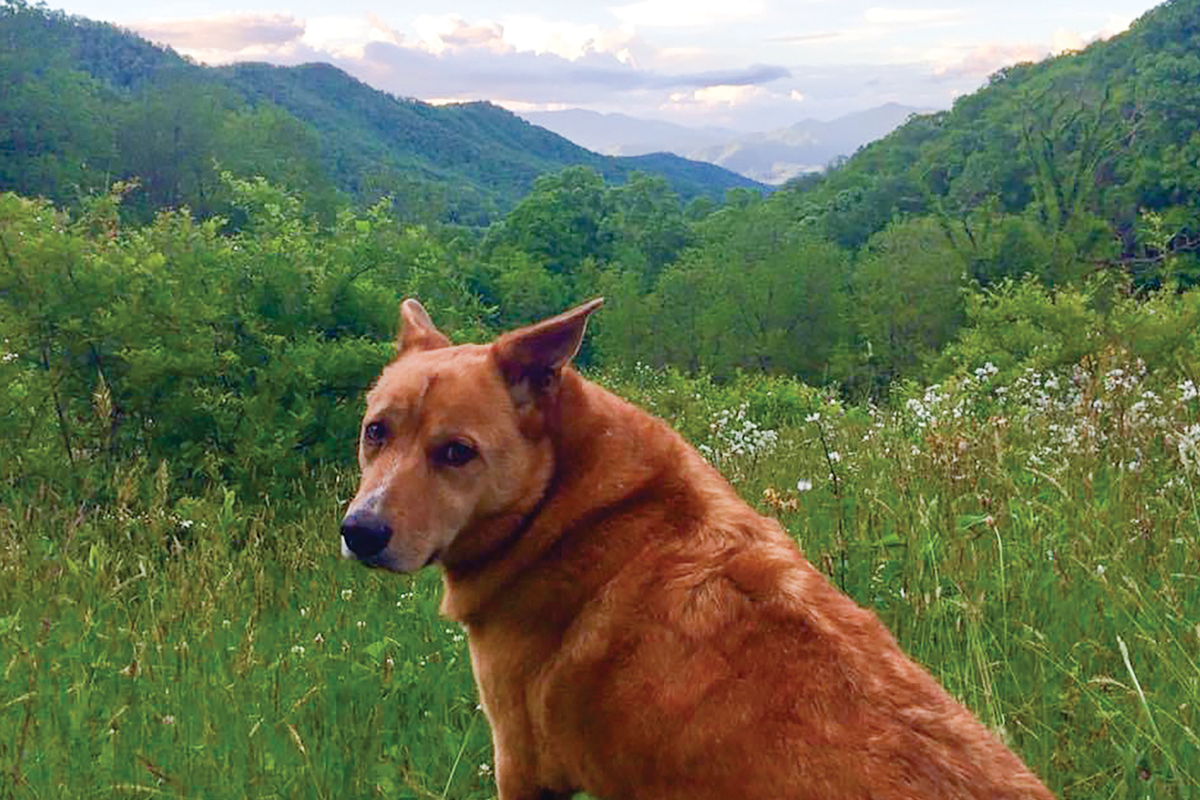 Ms. Magnolia, the good dog, has a fitting name. Adam Bigelow photo
Ms. Magnolia, the good dog, has a fitting name. Adam Bigelow photo
My dog Magnolia and I have been together for around 16 years. She’s a good dog. We used to wander all over the mountains searching for wildflowers, waterfalls and beautiful views.
These days, we mostly walk up the driveway to the mailbox and back. She’s a sweet old lady who is nearing the end of her life. And I will miss my friend when she is gone.
I do not allow dogs on my weekly wildflower walks for a few reasons, mostly because if I stop and point to a flower to teach about it, that’s right where the dog goes, sniffing and snuffling to see what our excitement is all about, wondering if they can eat it. But not Magnolia the dog. We worked out an arrangement long ago that when I stop in the woods to identify, adore and photograph a wildflower she would not come close, but would go lay down a good distance away and wait for me to get back to walking. She may have laid on some flowers and plants, but not the one I was loving on. She’s a good old dog.
And speaking of old magnolias, did you know that the magnolia family of plants (Magnoliaceae) is the oldest flowering plant family in the world? They’re so old that their flowers evolved before insects evolved wings and the ability to fly, and members of the magnolia family are still primarily pollinated by beetles due to this long evolutionary relationship. The lineage of the magnolia family goes back in the fossil record 95 million years. Fossilized leaves of the cucumber tree (Magnolia acuminata), one of the species that grows in Southern Appalachia, have been shown to be around 20 million years old and are still identifiable to species. That’s a really long time ago.
Of the seven species of trees in the magnolia genus, four can be found growing wild in the woods of Southern Appalachia. And none of those is the famous southern magnolia (Magnolia grandiflora) that most people think of when they picture a magnolia. That species grows along the coastal plain and piedmont of the deep south. While it certainly is planted in landscapes, they do not attain the height and grandeur of those in its native range.
The sweet bay magnolia (Magnolia virginiana) can be found in Polk and possibly Transylvania counties but is much more common in the piedmont and coastal areas of the state. The cucumber magnolia (Magnolia acuminata) is found in the mountains and gets its name from the shape and color of the emerging fruit structure that is said to resemble a cucumber. It does not taste like a cucumber, however. I did that work for you. You’re welcome. The leaves of the cucumber tree come to a distinctive point that looks stretched out and serve as a drip-tip that focuses water to the base of the tree during rains. That pointed shape is called acuminate in botanical terminology.
Related Items
The umbrella magnolia (Magnolia tripetala) gets its name from the leaves that are said to be so big that during a rainstorm you could pull of a leaf and use it as an umbrella. This species has a wide distribution in North Carolina and can be found growing across the state from the mountains to the coast. Like all magnolia trees in the state, it has beautiful large white flowers that emit a sweet fragrance to attract pollinating beetles.
The last of the magnolia trees that can be found growing in the mountains is the mountain magnolia (Magnolia fraseri), also called the Fraser magnolia, as it was named in honor of a Scottish botanist named John Fraser. The mountain magnolia is easily identifiable, as long as you can see the leaves. Where the leaf base attaches to the leaf stem, or petiole, the leaf actually goes below the attachment and then comes back up in a form that is said to resemble earlobes. This kind of leaf attachment is called auriculate, which means ears.
When I adopted my good dog so many years ago, her name was Maggie. I knew that I wanted to name my next pet after a plant, so I lengthened her name to Magnolia. I even gave her the full name of Magnolia fraseri, because of the ears.
(Adam Bigelow lives in Cullowhee. He leads weekly wildflower walks most Fridays and offers consultations and private group tours through Bigelow’s Botanical Excursions. This email address is being protected from spambots. You need JavaScript enabled to view it..)





